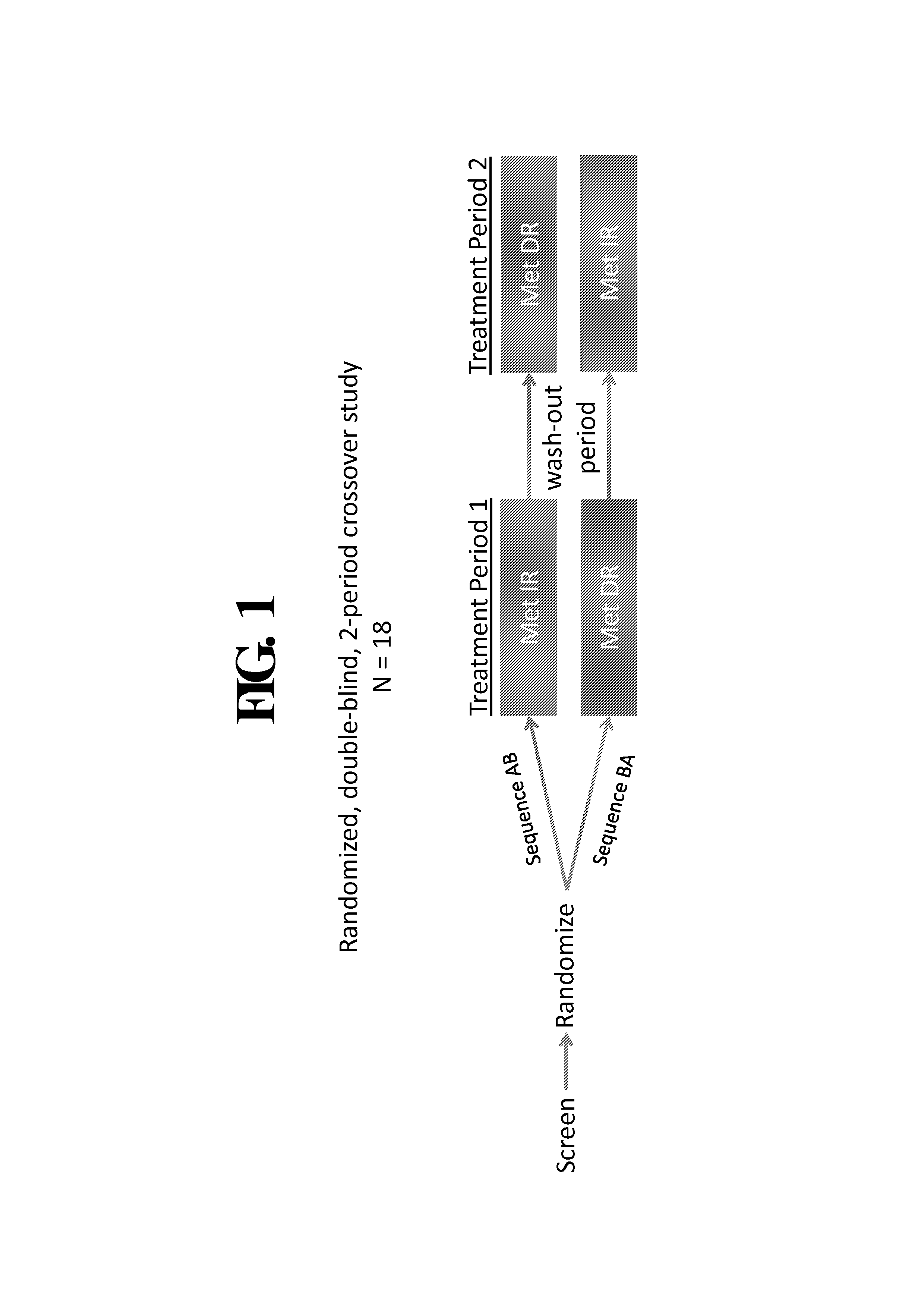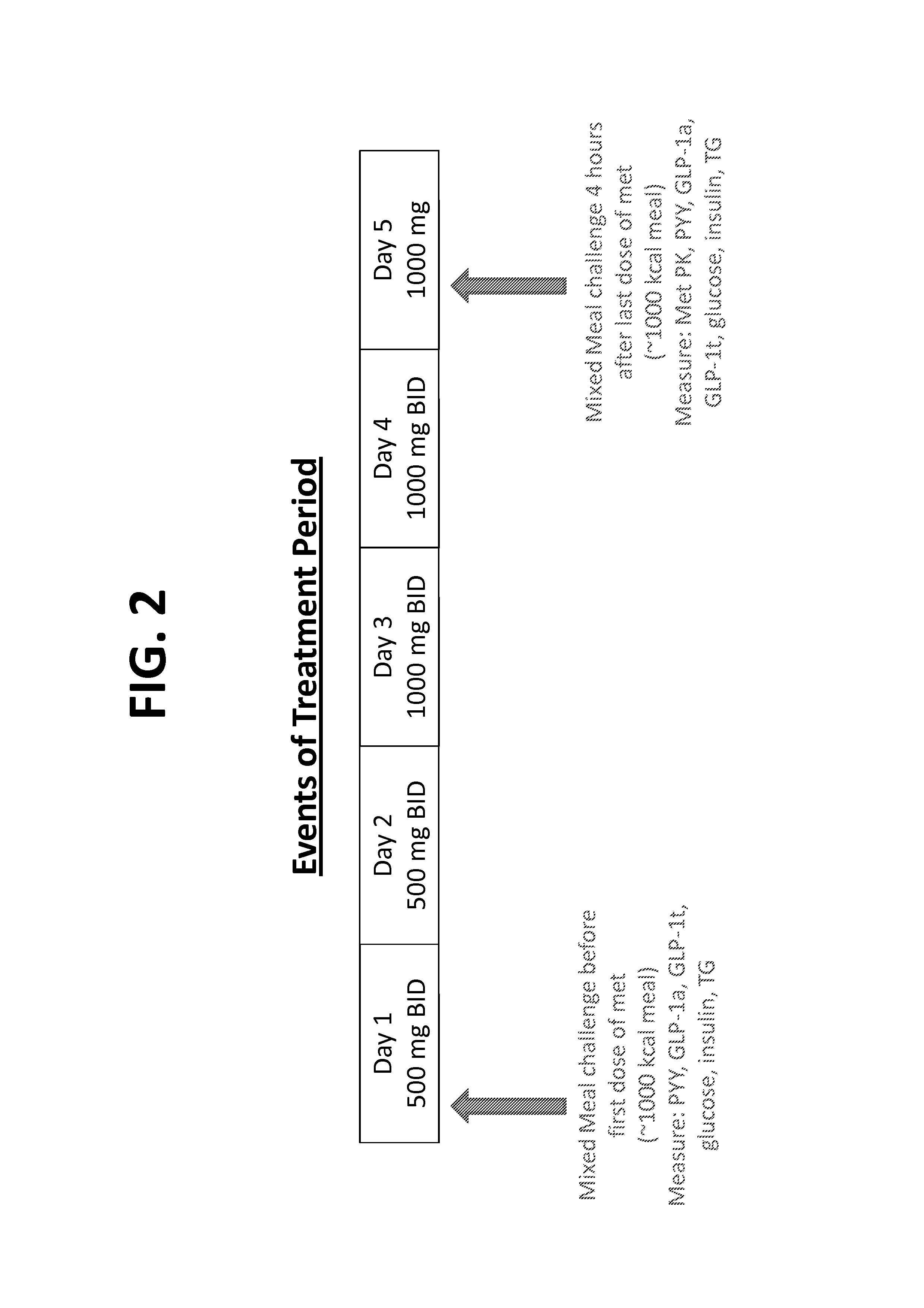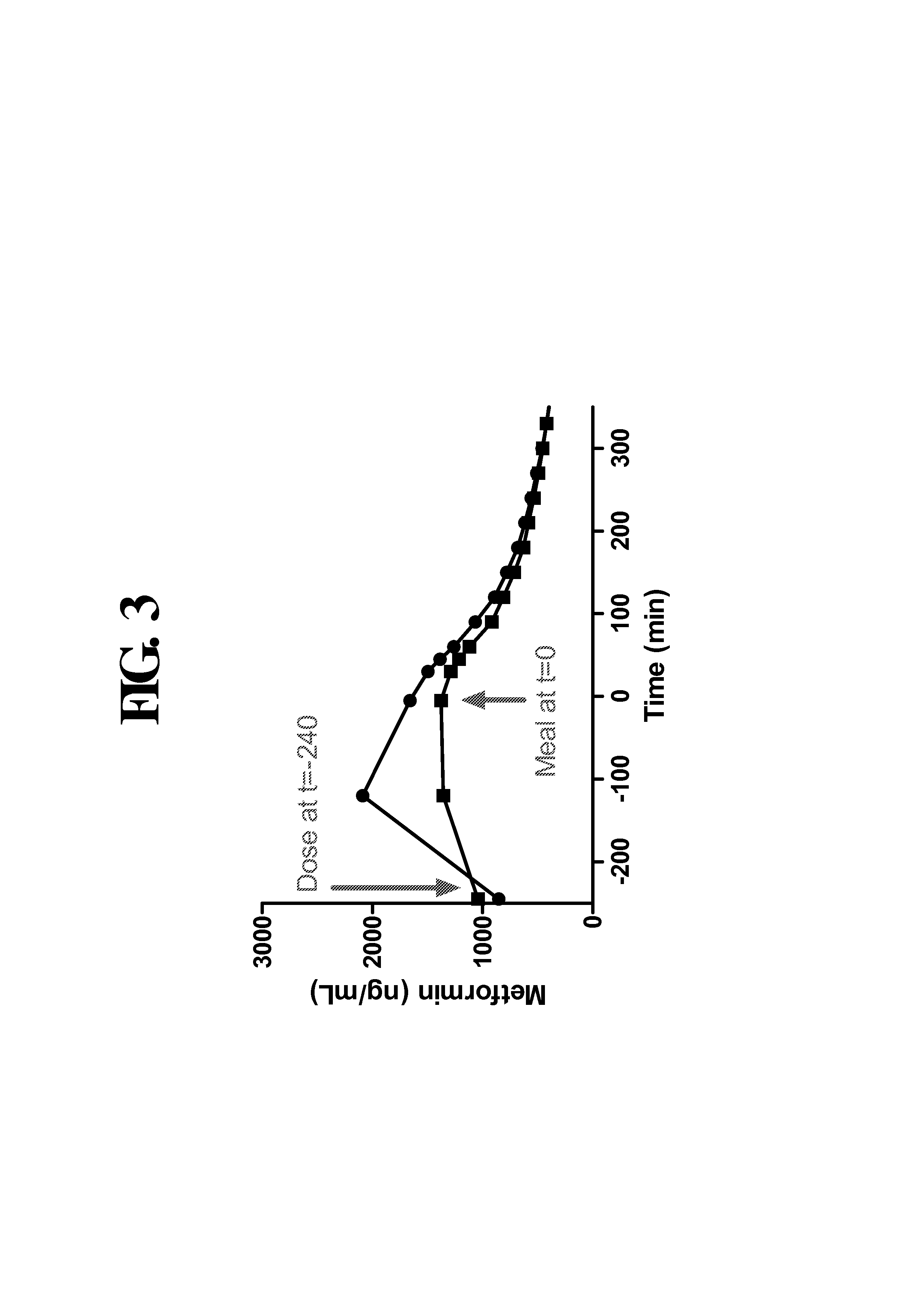Compositions and Methods of Treating Metabolic Disorders
a metabolic disorder and compound technology, applied in the field of metabolic disorders with biguanide compounds, can solve the problems of discontinuation in most countries, wide variety of products, and low and minimize the systemic bioavailability of biguanide compounds. the effect of reducing the bioavailability of biguanide compounds
- Summary
- Abstract
- Description
- Claims
- Application Information
AI Technical Summary
Benefits of technology
Problems solved by technology
Method used
Image
Examples
example 1
Enteroendocrine Production of PYY, GLP-1 (Active) and GLP-1 (Total) and Reduction of Glucose and Insulin is Independent of Plasma Absorption of Metformin
example 1.1
Materials and Methods
[0237]Population: Approximately 18 eligible male and female subjects, 18 to 65 years of age, with a BMI of 25.0 to 35.0 kg / m2, were randomized in this study. To be eligible, each subject also met the following criteria: (a) was not breastfeeding; (b) had a negative pregnancy test result (human chorionic gonadotropin, beta subunit); (c) surgically sterile, postmenopausal, or if of childbearing potential, practiced appropriate birth control during the entire duration of the study; (d) had a physical examination with no clinically significant abnormalities, including but not limited to the following conditions: (i) Hepatic disease; (ii) Renal disease; (iii) gastrointestinal disease; (iv) Endocrine disorder, including diabetes; (v) Cardiovascular disease; (vi) Seizure disorder; (vii) Organ transplantation; and (viii) Chronic infection; and (e) an ability to understand and willingness to adhere to protocol requirements.
[0238]Formulations
[0239]The metformin DR formula...
example 1.2
Results
[0264]The study design and event timeline are shown in FIGS. 1-2. Shown in Tables 4 and 5 below are the resulting subject disposition and population (Table 4) and the demographic and baseline characteristics of 18 subjects (Table 5).
TABLE 4Subject Disposition and PopulationParameterResultRandomized18Completed17Withdrawal (positive drug test)1Evaluable Population162 subjects excluded from evaluable population; 1 withdrawn and 1 could not complete test meal at end of Treatment Period 2
TABLE 5Demographic and Baseline Characteristics (n = 18)ParameterResultGender (M / F)9 / 9Mean Age (yr) ± SD44 ± 10Race9 Caucasian, 7 Hispanic, 2 blackMean BMI (kg / m2) ± SD29.3 ± 2.8
[0265]FIG. 3 demonstrates that ingestion of Metformin DR minimized adsorption of metformin in the plasma compared to Metformin IR. The area under the curve (AUC) and Cmax values for Metformin DR and Metformin IR are provided in Table 6 below.
TABLE 6Metformin Plasma PharmacokineticsLS Mean RatioReMet / MetforminP ValueAbs AU...
PUM
| Property | Measurement | Unit |
|---|---|---|
| Mass | aaaaa | aaaaa |
| Density | aaaaa | aaaaa |
| Density | aaaaa | aaaaa |
Abstract
Description
Claims
Application Information
 Login to View More
Login to View More - R&D
- Intellectual Property
- Life Sciences
- Materials
- Tech Scout
- Unparalleled Data Quality
- Higher Quality Content
- 60% Fewer Hallucinations
Browse by: Latest US Patents, China's latest patents, Technical Efficacy Thesaurus, Application Domain, Technology Topic, Popular Technical Reports.
© 2025 PatSnap. All rights reserved.Legal|Privacy policy|Modern Slavery Act Transparency Statement|Sitemap|About US| Contact US: help@patsnap.com



